- By Dan Veaner
- News
 Print
Print 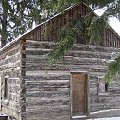 Two years ago the oldest log cabin in Tompkins and Cayuga Counties was dismantled and brought home to Lansing after spending 50 years in Auburn. That was the third time in the cabin's 218 years that it was reduced to a pile of logs for transport. If Town Councilman Bud Shattuck has his way it will be reassembled for the third time this summer. A site at the entrance to Salt Point has been chosen because it is easily accessible to the public, next to an existing parking lot, and visible from Myers Road.
Two years ago the oldest log cabin in Tompkins and Cayuga Counties was dismantled and brought home to Lansing after spending 50 years in Auburn. That was the third time in the cabin's 218 years that it was reduced to a pile of logs for transport. If Town Councilman Bud Shattuck has his way it will be reassembled for the third time this summer. A site at the entrance to Salt Point has been chosen because it is easily accessible to the public, next to an existing parking lot, and visible from Myers Road."My hope is to get the cabin built, and to get it built this summer," Shattuck says. "It's been an ongoing project that we've spent a couple of years hashing over, thinking about, realizing that there's not financial resources for, but there are a lot of physical resources. People in the town that have volunteered to commit their time and their energy for it. We know we have a multitude of other resources."
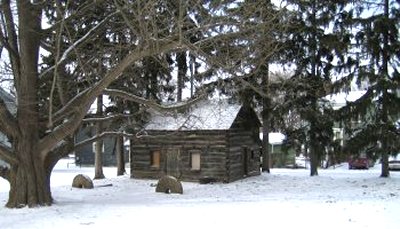
The log cabin two years ago when it was behind
the Cayuga Museum
| Editor's Note History is an ever-changing landscape. In past stories I reported on research provided by Chris Mucha and others that the cabin was built in 1749. On reflection that didn't make sense to me because the land was granted as payment to Revolutionary War soldiers, and Thomas North bought Lot 71 from John Lawrence on April 5th, 1791. The 600 acre lot went for $3 per acre. North paid a total of $1,800. On Tuesday I went to the Cayuga Museum in Auburn where they graciously allowed me to look at the researched they had amassed over 50 years, including original letters and pictures. I have adjusted the dates on my time line accordingly. 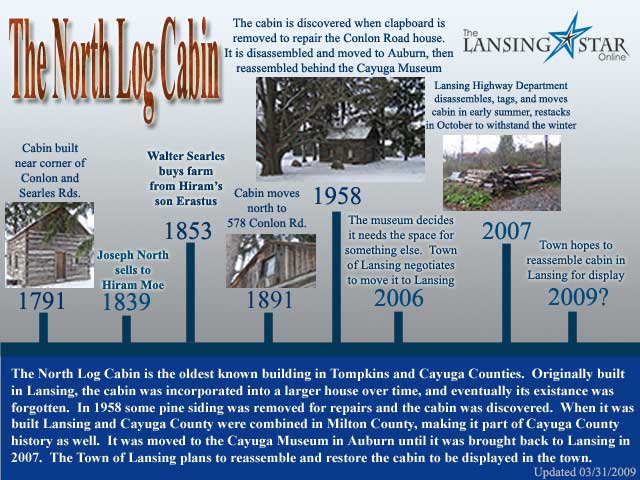 CabinTimeline3-2009.jpg CabinTimeline3-2009.jpg Click above to enlarge | ||
In 1891 the cabin was dismantled by Daniel Tichnor, who personally reassembled it a little ways north at 578 Conlon Road. As Tichnor's family grew he added on to the cabin, and eventually it was engulfed in a larger house. It was rediscovered in 1957 when wooden siding was removed for repairs, revealing the original cabin wall.
In 1958 Tompkins County Historian W. Glenn Norris bought the cabin from then owner Julius Buckingham for one dollar with the intention of transferring ownership to Professor Walter K. Long for the Cayuga Museum of History and Art. Long wanted the cabin because it resembled the one where President Millard Fillmore was born in 1800. Later that year the cabin was reduced to logs once again.
Long corresponded with a number of historians and curators who had experience and knowledge of log cabins, including the National Trust for Historic Preservation, the New York State Historical Association, and historical associations around the country that had their own log cabins. He got advice on the kind of shingles to put on the roof, and on how to preserve the cabin and protect it against bugs and other threats. But his toughest task was to find the money and people to reassemble the cabin.
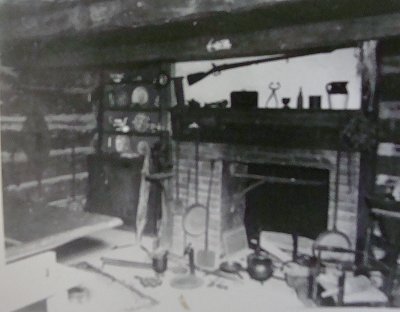
The interior of the cabin around 1960
Photo courtesy of the Cayuga Museum
He tirelessly approached local people, raising over $5,000 from the Rotary Club and others, lining up construction equipment, and getting volunteers to commit to helping reassemble the structure. By November he had his building permit, and on June 30 the Rotary Club held a ribbon cutting to celebrate opening the cabin to the public.
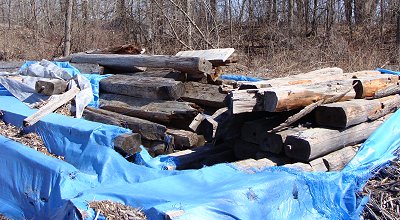
The current state of the cabin as seen last week
The cabin's logs are currently piled on a concrete slab near the Lansing Highway Department, poorly protected by a tarpaulin that ripped apart this winter. Last year the Town Board gave Shattuck until this year to get the cabin assembled before they either junk it or give it away. Part of their concern was that the cabin would rot away unless it is put back together with a new roof to protect it. But Shattuck says that he thinks they will allow more time to assemble the people he needs to rescue it, and that logs that have lasted more than 200 years will last a little bit longer if need be.
"The North family is one of the oldest families in the Town of Lansing and we'll go into the historical part to see if it's older than the Town of Lansing," he says. "Hopefully there are enough people who appreciate the history and will appreciate what happens to make this work."
Behind the scenes local organizations are being approached to see if they will help. Money and materials will have to be raised to put down a slab to build it on, and to reconstruct a roof, as well as to replace logs that have rotted beyond repair. Highway Department Superintendent Jack French estimates that as many as a third of the logs may need to be replaced, but Shattuck says that estimate may be high.
"I don't believe that, because these logs have stood for a long time," Shattuck says. "The ones that are rotted are going to be more rotted. Those that are structurally sound will be structurally sound. This isn't a building that needs to be used by someone. So once you put it together and get it sound, and get a roof on it that covers and protects it again, it could last for another hundred or two hundred years. And there may be other methods of preservations later on that make it even stronger and more valid."
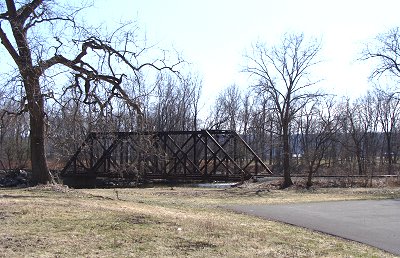
This location at the entrance to Salt Point, within walking
distance from Myers Park and visible from Myers Road will
be the cabin's new home if it is reassembled.
The cabin's future is anything but assured. It will depend on who shows up at the meeting on the 21st, and whether someone can be found to take the lead. Shattuck admits that the time may come when the logs will simply be discarded or sold off. But he doesn't want to rely on one meeting before deciding when to give up.
"I don't want to say right now," he says. "In April we'll see how many people show up and how much interest there is, utilize everyone's' ideas. At that time we'll look and say, 'Is there a place where we can have a resource of people, of historical knowledge about how to replace the logs and make it factual, to pay for the roof and the shingles and the things we'll need to protect it long term? Are there resources to excavate and put a pad down to put it on, and maybe clear a spot to have a walking trail up to it, or parking near it? All those logistics have to come into play.
"If it looks like it's overwhelming and there are not enough people, I'll probably give it another shot. I'll have a second meeting to see if we can muster this together. If that doesn't happen that may be a time when I acquiesce."
The meeting is set for Tuesday, April 21st at 5pm, tentatively at the Lansing Town Hall.
----
v5i14



